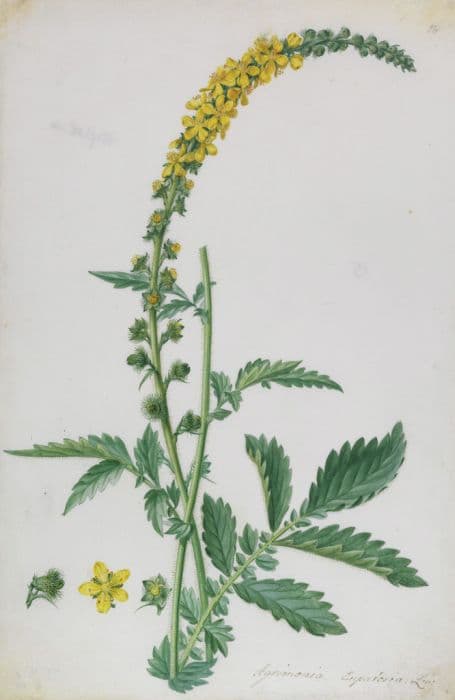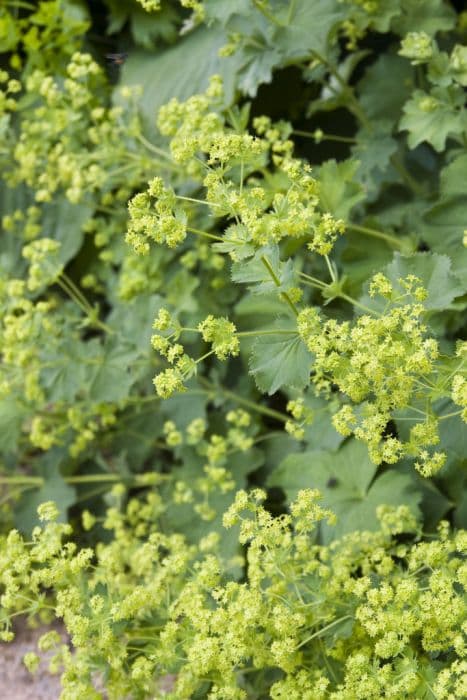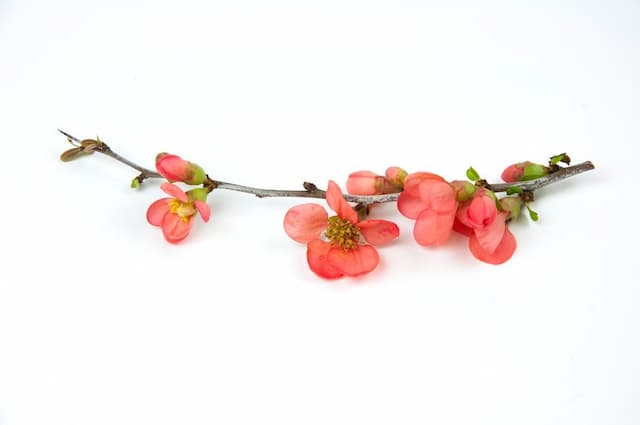Ninebark Physocarpus opulifolius Little Angel = 'Hoogi016' (PBR)
ABOUT
The Physocarpus opulifolius Little Angel is also commonly known as Ninebark 'Little Angel'. The plant is notable for its compact, mounded habit with dense, lush foliage. The leaves are particularly attractive, being small and deeply lobed, with an enticing combination of colors that typically showcase shades of green, yellow, and cream. This variegation creates a striking contrast that can brighten up any garden space. During the warmer months, Ninebark 'Little Angel' blossoms with clusters of dainty pinkish-white flowers, which add a further layer of visual appeal. The flowers can attract butterflies and other pollinators, enhancing the lively nature of a garden. When the flowering season concludes, the plant may produce small red-brown fruit that can persist into the winter, offering additional interest even as the temperatures drop. The bark of this plant stands out with its exfoliating texture, which peels away in strips to reveal layers of reddish to light brown underbark, creating a year-round ornamental feature. Overall, Ninebark 'Little Angel' is admired for its multiseasonal display of foliage, flowers, and exfoliating bark, making it a versatile and attractive addition to garden landscapes.
About this plant
 Names
NamesSynonyms
Ninebark, Little Angel Ninebark, Dwarf Ninebark.
Common names
Physocarpus opulifolius 'Hoogi016' (PBR), Physocarpus opulifolius 'Little Angel'.
 Toxicity
ToxicityTo humans
Ninebark, in general, is not considered highly toxic to humans. However, it is not commonly eaten, and ingestion of parts of the plant, like leaves or stems, could cause stomach upset or discomfort. There are no well-documented cases of poisoning from ninebark, so extreme caution should still be exercised to prevent any potential adverse effects. If any part of the plant is ingested and symptoms manifest, medical attention should be sought.
To pets
Similarly to humans, ninebark is not known to be highly toxic to pets. That said, it is still advised that pets do not ingest this plant as it could possibly lead to gastrointestinal upset or more severe symptoms if consumed in large quantities. In the event that a pet does ingest ninebark and shows signs of distress, such as vomiting, diarrhea, or unusual behavior, it is important to contact a veterinarian promptly.
 Characteristics
CharacteristicsLife cycle
Perennials
Foliage type
Deciduous
Color of leaves
Green
Flower color
Pink
Height
2-3 feet (60-90 cm)
Spread
2-3 feet (60-90 cm)
Plant type
Shrub
Hardiness zones
3
Native area
North America
Benefits
 General Benefits
General Benefits- Compact Size: The plant is suitable for small spaces due to its dwarf stature, making it a good choice for small gardens or containers.
- Ornamental Foliage: Features attractive foliage with colorful leaves that change through the seasons, providing year-round interest.
- Low Maintenance: Requires minimal pruning and care once established, which is ideal for those looking for a low-effort garden addition.
- Drought Tolerance: It is relatively drought tolerant, making it suitable for xeriscaping and reducing the need for watering.
- Hardiness: It's hardy in a range of temperatures and can survive in cold climates, making it versatile for various landscapes.
- Wildlife Attraction: The plant can attract birds and beneficial insects, which can aid in pollination and pest control.
- Adaptability: Adapts well to a variety of soils, although it prefers well-drained conditions, making it fairly easy to integrate into different garden settings.
- Decorative Flowers: Produces clusters of small, white to pinkish flowers in late spring or early summer, adding to its decorative appeal.
 Medical Properties
Medical PropertiesThis plant is not used for medical purposes.
 Air-purifying Qualities
Air-purifying QualitiesThis plant is not specifically known for air purifying qualities.
 Other Uses
Other Uses- The Ninebark 'Little Angel' can be used in miniature gardens or fairy gardens due to its compact size and attractive foliage, creating a whimsically scaled-down landscape.
- It can be used as a natural dye source; the bark and leaves may produce varied colors when used in the traditional dyeing process for fabrics or other materials.
- The peeling bark of Ninebark 'Little Angel' provides textural interest in crafts, such as in making decorative wreaths or as an accent in floral arrangements.
- This plant's dense growth habit can be utilized for creating low natural barriers or dividers in garden settings without the need for fencing.
- Ninebark 'Little Angel' can be trained and pruned to grow as a bonsai, offering a unique challenge for enthusiasts of the miniature tree art form.
- The branches can be used as a natural play material in children's outdoor play areas to create hiding spots or small make-believe environments.
- During winter, its persistent seed pods can be coated with bird-friendly substances like peanut butter and seeds to function as a natural bird feeder.
- Photographers might use the plant as a backdrop for insect and small-animal photography due to its structure and colorful leaves that provide a complementary natural setting.
- Its wood can be carved into small objects or used in woodturning to create artisanal pieces like pen blanks or buttons, showcasing the wood's natural beauty.
- When dried, the small leaves and flowers of Ninebark 'Little Angel' can be incorporated into potpourri mixes to add texture and a touch of nature to indoor spaces.
Interesting Facts
 Feng Shui
Feng ShuiNinebark is not used in Feng Shui practice.
 Zodiac Sign Compitability
Zodiac Sign CompitabilityNinebark is not used in astrology practice.
 Plant Symbolism
Plant Symbolism- Adaptability: Ninebark, including the 'Little Angel' variety, is known for its ability to thrive in a variety of soil types and climatic conditions, symbolizing the ability to adapt and flourish in diverse environments.
- Resilience: Ninebark has a hardy nature, often able to withstand harsh conditions and diseases, representing resilience and the capacity to recover from adversity.
- Transformation: With its foliage changing colors throughout the seasons, Ninebark illustrates transformation and the idea of embracing change in life.
- Protection: Traditionally, some indigenous tribes believed that Ninebark had protective qualities, used in amulets to ward off harm and negative energies.
 Water
WaterFor the Ninebark 'Little Angel', water the plant deeply when the top inch of soil feels dry, which typically means watering once a week. During the growing season, in the absence of rain, apply approximately one gallon of water to the base of the plant, ensuring the root zone is thoroughly moistened. Adjust the frequency based on weather conditions; more often during hot, dry periods and less during cooler, wet spells. Avoid overwatering, as Ninebark prefers a well-draining soil and does not like to sit in soggy conditions. Always check the soil's moisture level before watering to prevent waterlogged soil which can lead to root rot.
 Light
LightThe Ninebark 'Little Angel' thrives best in full sun to partial shade. An ideal location would offer at least four to six hours of direct sunlight per day, with some afternoon shade in hotter climates to protect from intense sunshine. A spot that receives morning sun and dappled afternoon light can also be suitable, ensuring the plant has enough light for healthy growth without being burnt by the hot afternoon sun.
 Temperature
TemperatureNinebark 'Little Angel' is hardy and can tolerate a range of temperatures. The ideal growing conditions are between 60°F and 70°F. However, it can withstand minimum winter temperatures down to -30°F and summer highs up to 90°F without any significant problems. The plant is resilient to temperature fluctuations within these extremes and will thrive if planted in climate zones where these conditions are met.
 Pruning
PruningNinebark 'Little Angel' should be pruned to maintain shape and encourage bushier growth. The best time to prune is late winter or early spring before new growth starts. Pruning can be done annually, removing up to one-third of the oldest stems to ground level to rejuvenate the plant and stimulate new growth. Also, remove any dead or damaged wood at this time to keep the plant looking tidy and healthy.
 Cleaning
CleaningAs needed
 Soil
SoilNinebark 'Little Angel' prefers a well-draining soil mix rich in organic matter. The ideal soil pH for this plant is between 5.5 and 7.0. A mix of loam, peat, and coarse sand can provide the right structure, nutrients, and drainage.
 Repotting
RepottingNinebark 'Little Angel' does not need frequent repotting and should be repotted every 2-3 years or when it has outgrown its current pot.
 Humidity & Misting
Humidity & MistingNinebark 'Little Angel' is adaptable to a wide range of humidity conditions and does not have specific humidity requirements. It can thrive in the average humidity found outdoors.
 Suitable locations
Suitable locationsIndoor
Place 'Little Angel' in bright, indirect light indoors.
Outdoor
Plant 'Little Angel' in partial to full sun outdoors.
Hardiness zone
3-7 USDA
 Life cycle
Life cycleCommonly known as Ninebark 'Little Angel', Physocarpus opulifolius 'Hoogi016' begins its life cycle as a seed, which when sown in fertile, well-draining soil and given the right conditions, will germinate and produce a seedling. The seedling grows into a small bush with a dense, compact habit, featuring distinctive reddish-purple leaves and stems. As it matures, 'Little Angel' enters the vegetative stage, where it focuses on leaf and stem growth before progressing to the flowering stage, typically in late spring to early summer, showcasing clusters of small, white to pale pink flowers. Following pollination, these flowers develop into small, dry, reddish fruits (follicles) that may add ornamental value in late summer to autumn, with potential dispersal contributing to the spread of the plant. During its perennial life cycle, 'Little Angel' undergoes a period of dormancy in the winter, where it ceases active growth and conserves energy, before resuming growth with renewed vigor in spring. Over time, 'Little Angel' can be propagated through cuttings or division, allowing for the continuation of its life cycle in new locations.
 Propogation
PropogationPropogation time
Spring-Early Summer
The Ninebark 'Little Angel', a cultivar of Physocarpus opulifolius, is a patented shrub, so propagation rights are legally controlled. However, for educational purposes, the most popular method of propagation for Ninebark 'Little Angel' would be softwood cuttings. This process occurs in late spring or early summer when new growth is mature enough yet still tender. Cuttings should be about 4 to 6 inches long, dipped in rooting hormone and placed in a moist, well-draining soil mix. The environment should be kept humid, often by covering the cuttings with a plastic bag or using a mist system, and they should be kept out of direct sunlight until roots have established, which usually takes a few weeks.









